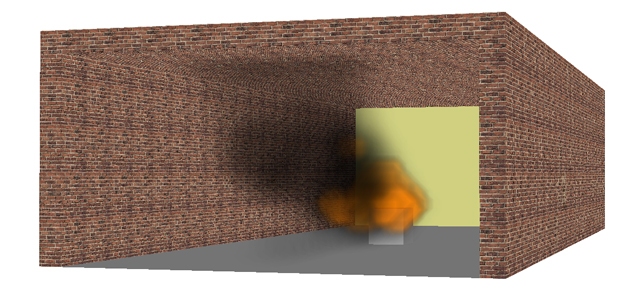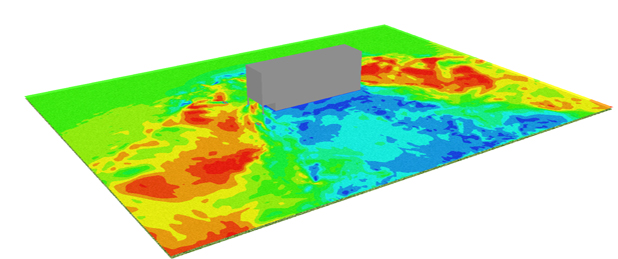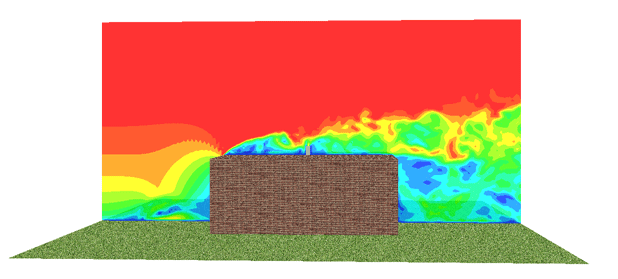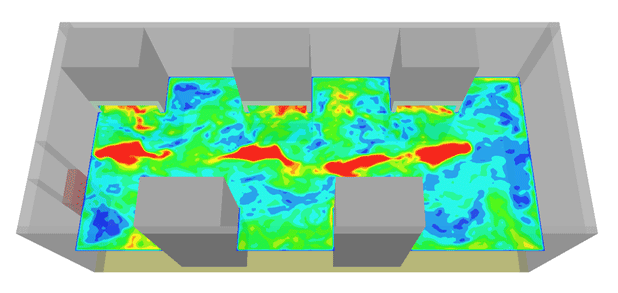Contaminant spill and tracking
HOME <Environmental Solutions < Contaminant spill and trackingThe re-entrainment of building exhausts, fumes from laboratory vents, or emissions from idling vehicles into buildings can impair indoor air quality, and negatively affect occupant comfort and safety. Some of the factors that can influence re-entrainment are stack location, gas exit velocity, building design such as the location of operable windows or intakes. Building design, location and orientation to wind are also important. Similarly, exhausts from building stacks can also be dispersed to other sensitive receptor locations in adjacent buildings, pedestrian areas, or open spaces.
Contaminant spill from an underground gas pipe and its access to a building through structure fractures can be very harmful to human health if it is not detected at early stage after the spill.
Exhaust re-entrainment and dispersion studies are used to help identify design measures and features that will help to prevent the entry of contaminants into buildings through air intakes or operable windows and the dispersion of exhaust to pedestrian areas or other sensitive receptors.
EASTechnology utilizes CFD modeling in conjunction with LES (large Eddy Simulation) Turbulence modeling as these phenomena are very affected by the turbulence levels, and wind tunnel testing to help design teams identify or modify features that will minimize air quality problems caused by a contaminant dispersion. Improved air quality is important for occupant safety and comfort and building performance.
. Our CFD capabilities allow us to assess:
- Pollutants dispersion modeling
- Contaminant spill and tracking
- Concentration accumulation
- Contaminant intrusion (vapor intrusion)
- Diseases spread mitigation
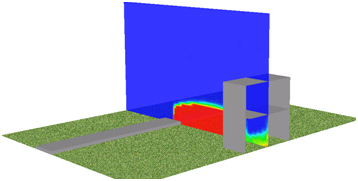 |
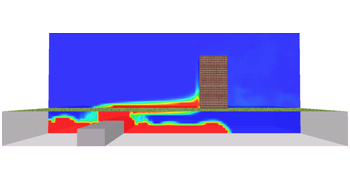 |
| Dioxide carbon concentrations – spill from a side road | Dioxide carbon concentrations – spill from underground gas pipe leakage |
| Related Animation:CO2 leakage from an underground pipe and its intrusion to a building | Related Animation:Iso-surface corresponding to a concentration of 100 [µg/m3] of CO2 |

